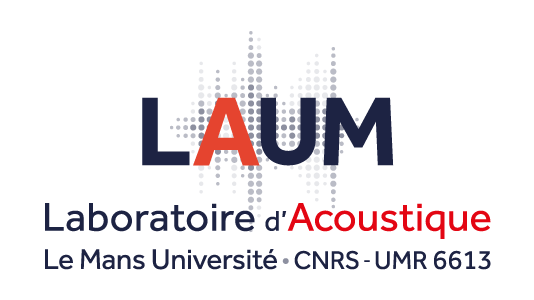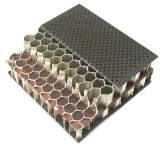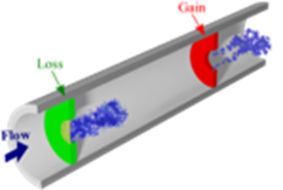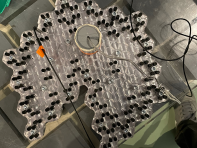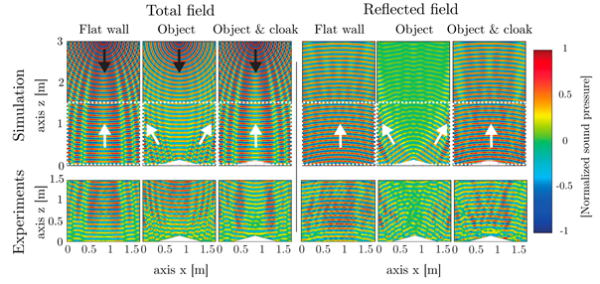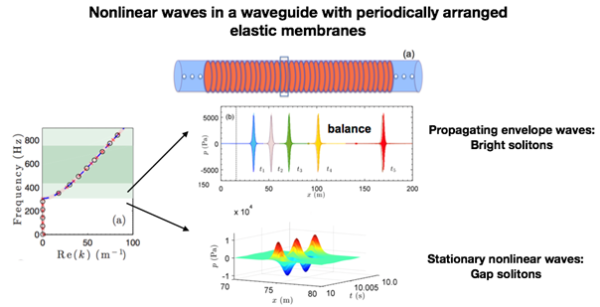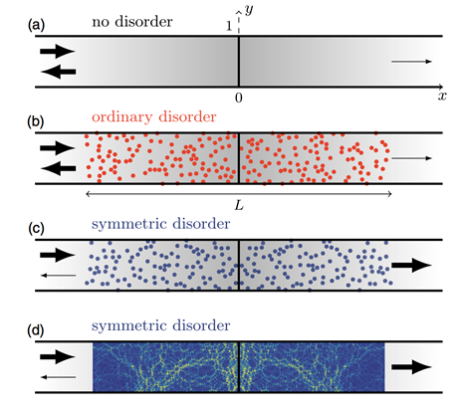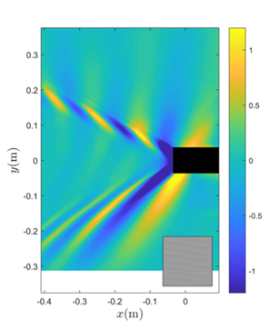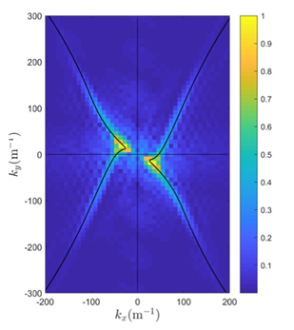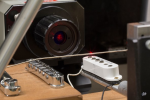Guides & Structures
Guides & Structures
Guides & Structures
This team is interested in the propagation of waves in complex media and in the whole range of audible frequencies.
The research focuses on problems related to acoustic comfort, improvement of the sound environment and musical acoustics. The team studies the radiation of sound sources, whether desired (instrument making) or not (aeronautics, radiation from vibrating structures...), and the propagation (urban acoustics, wave control in structured media).
The work is carried out both from a fundamental point of view (analytical approaches and development of numerical methods) and from an experimental point of view (development of measurement and simulation systems).
Guides & Networks
The activity of the OR GUIDES & NETWORKS is globally related to two thematic fields: flow and wall effects in waveguides on the one hand, and guided waves, networks and metamaterials on the other hand. The notion of waveguide, common to these two main axes, is the basis of the thematic unity of the OR.
- Guiding with flow : wall effects (liners-impedance, corrugations, perforated plates, measurement benches, non-reciprocal reflection, black hole lasers)
- Numerical aeroacoustics (high order finite element, hybrid, temporal)
- Non-Hermitian" acoustics (PT symmetry, diode, reflectionless modes)
- Topology and symmetry (1D and 2D topological networks, local symmetry)
- Metamaterials and metasurface (total absorption by "critical coupling", slow sound, invisibility mat)
- Non-linear metamaterials (soliton, harmonic generation)
- Guides : effects of disorder (diffusive regime and symmetry, hyperuniform)
- Water surface waves (metabathymetry, asymmetric wake, transient absorption)
Physics of Musical Instruments
The research group on Physics of Musical Instruments (OR PIM) regroups activities aimed at understanding the physical phenomena involved in the functioning of musical instruments, based on theoretical studies (analytical models, numerical simulation) and experimental studies (development of characterization methodologies and measurements in playing situations).
 The research carried out addresses issues related to wind instruments (prediction of playing regimes, reed characterization, non-linear propagation in brass instruments, modeling of the radiation of horns, active control of wind instruments...) and string instruments (vibroacoustics of string instruments, inharmonicity of piano strings, modeling and characterization of guitar pickups...).
The research carried out addresses issues related to wind instruments (prediction of playing regimes, reed characterization, non-linear propagation in brass instruments, modeling of the radiation of horns, active control of wind instruments...) and string instruments (vibroacoustics of string instruments, inharmonicity of piano strings, modeling and characterization of guitar pickups...).
In addition to providing new knowledge on the functioning of instruments, the research group contributes to the transfer of developed methodologies to the instrument making community, as well as to the dissemination of knowledge to the general public, musicians and instrument makers.
Vibro-Acoustic of Structures
The "Vibro-acoustics" research operation brings together a set of activities whose objective is to contribute to the development and application of methods for modeling and experimental characterization of systems in which coupling mechanisms between mechanical vibrations and acoustic fields are involved.
The competences developed in the research operation cover analytical (modal or wave), numerical (finite and boundary elements) and experimental methods in vibro-acoustics (inverse methods, acoustic imaging). The themes concerned are divided into three axes: experimental methods, vibration and/or acoustic reduction devices under lightening constraints, analysis of wave couplings.
Experimental methods
- Development of imaging methods

- Acoustic/vibratory imaging by holography or beamforming,
- Measurement of full field vibrations (ultra-fast optical holography, thermal camera).
- Development of post-processing methods
Vibration and/or acoustic reduction devices under lightening constraints
- Exploitation of original physical phenomena

- Vibration attenuation by periodization effects,
- Vibration reduction by Acoustic Black Hole effect (ABH),
- Dissipation of vibratory energy by non-linear phenomena (friction, micro-impacts ...),
- Semi-passive control using piezoelectric patches.
- Integration mixing different physical phenomena (ABH, damping, periodization)

- Enhanced black holes (with piezoelectric and thermal active systems),
- Elaboration of design rules under lightening constraints,
- Meta-plate development,
- Insertion of lightweight granular materials, ABH, porous materials,…
Analysis of wave couplings
- Fluid-structure couplings

- Vibro-acoustics of industrials ducts,
- Vibro-acoustics of complex industrial structures,
- Vibro-acoustics of wooden buildings,
- 3D vibration wave coupling

- Coupling between in-plane and out-of-plane movements,
- Control of the effects at the interfaces.
- Opto-mechanical coupling
- Reduction of parametric instabilities in the gravitational wave detectors of the LIGO project.
